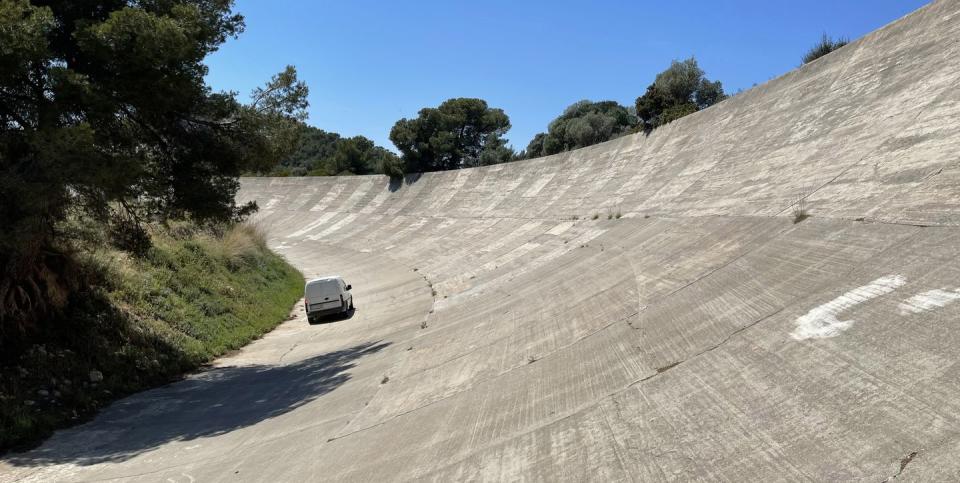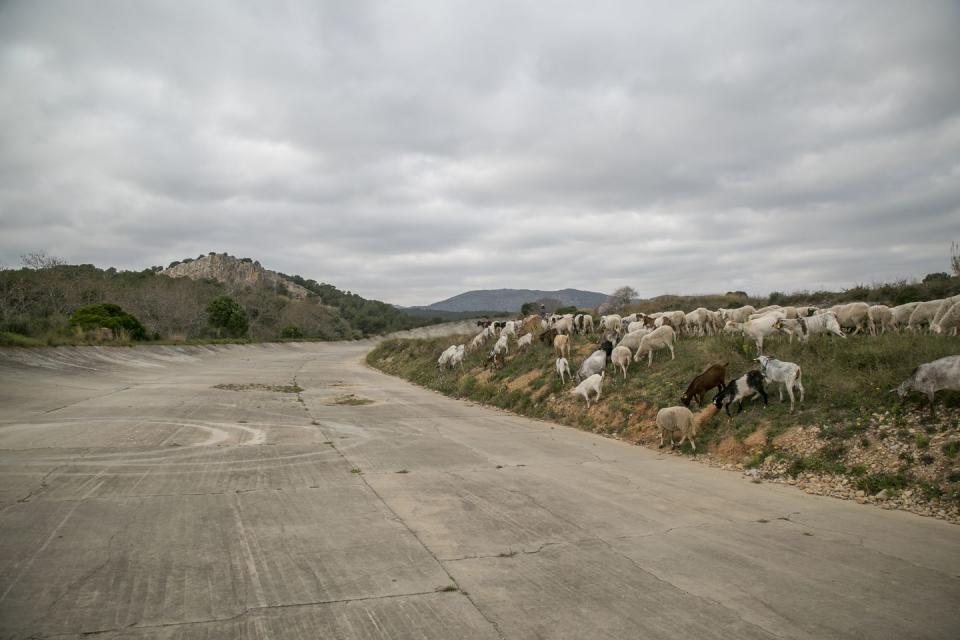60-Degree Banking at Sitges-Terramar Circuit in Spain Has to Be Seen to Be Believed

Carlos Sainz Sr., of WRC fame, set the track record at Sitges-Terramar in 2012 at the wheel of an Audi R8 LSM, which he lapped at 105 mph, beating the record established in 1923 by Louis Zborowski.
The venue hosted one Grand Prix, the 1923 Spanish Grand Prix, which was won by France’s Albert Divo in a Sunbeam—but Zborowski set his fastest lap that day.
A group is trying to revive Sitges-Terramar as an event venue, with the idea being to create an international standard equestrian center in the infield, which would also allow for a motoring area that could host events and launches.
The Sainz family is big news in Spain. Carlos Sainz Sr. is a two-time World Rally Champion, a winner of 26 World Championship events, and thrice the victor of the Dakar Rally, including in 2018 and 2020.
Son Carlos Sainz Jr. is a Ferrari Formula 1 driver, and so he’s in the spotlight this weekend as F1 gathers in Barcelona.
But perhaps the least known achievement of this dynamic duo is Carlos Sr.’s lap record at the Sitges-Terramar circuit, one of the world’s oldest racing facilities. This was set in 2012 at the wheel of a Audi R8 LSM, which he lapped at 105 mph, beating the record established in 1923 by Louis Zborowski at the wheel of a Miller Indy car that had been converted to meet the Grand Prix rules in Europe. Zborowski—whose father was also a driver and had married into the Astor family—recorded a best lap of 97.6 mph.
The track was abandoned as a racing venue by 1925.
You may never have heard of Sitges-Terramar, but all you need to know is that it is a high-banked 1.2-mile concrete kidney-shaped oval with 60-degree banking (unofficially closer to 90 degrees at its uppermost peak).

Yes, you did read that right. It makes the 31-degree banking at Daytona International Speedway or the 28-degree banking at Bristol Motor Speedway look like a kiddie course.
"I had no idea that this place even existed—and even less that it was the first racetrack ever built in Spain,” Sainz said back in 2012. “The banking is tremendous, especially when viewed from below. This is my first-ever oval circuit with banking like this. It was very special.”
Despite many visits to Barcelona in the last 30 years, I had never managed to get to nearby Sitges-Terramar, located about 50 minutes by car from Barcelona. I knew it existed and that it was private property and one could not just climb over the walls. But then, last Monday, the day after the Portuguese Grand Prix, I was pondering my route to the Spanish GP and realized that I would be passing Sitges on the way.
I looked around on the internet to see if there was a contact and emailed to ask if I might be allowed to visit the track. The COVID-19 situation in Catalonia, Spain, is not easy to navigate. There has been a curfew at night and neighboring regions have been shut down for six months, with gatherings limited to six people, all the restaurants closed, and mask wearing in public obligatory. So I didn’t have high hopes of success.

But an email came back, thanking me for my interest and saying that normally there are only guided tours available, but under the circumstances they would see what could be arranged with their maintenance man Sebastián. I was warned that the visit would only be on foot, but I was happy with that.
And so, after driving 400 miles on Wednesday morning, across the plains of La Mancha and then up the Mediterranean coastline, I arrived at the gates of the circuit, at the end of a dusty dirt road, and rang the number I had been given to speak to a Spaniard who speaks no English. My Spanish isn’t much good, but I managed to say, “Hola, es el giornalista ingles,” which isn’t entirely correct, but good enough to be understood.
A few minutes later, Sebastián arrived in an old van and suggested that I drive in and follow him, so that he could show me the circuit. We drove around slowly, stopping now and then to take pictures and to allow him to talk about the circuit and its different buildings.

It was built, he explained, on an old estate and the only way they could fit everything into the limited space available was to have the main straight go right past the front door of the 18th century house, known as the Clot dels Frares. The grandstand was built opposite the house, but there were no pits in those days and only a couple of garages with a courtyard between them where the cars were prepared. They never got much use.
The first corner was literally hewn from rock, with the infield looking down on the cars as they passed through the man-made cutting. When Sitges-Terramar opened there was nothing but the house in the infield, but in the 1950s, when the track was effectively derelict, rows of concrete chicken coops were built. They are now all in ruins.
The concrete surface is uneven these days, not surprising after 100 years and the passage of vehicles delivering to the chicken farm. There are a few holes and some vegetation poking in places, but the astonishing banked turns are in fairly good condition.

Odd though it may seem, this was the site of the 1923 Spanish Grand Prix, and a huge crowd came to watch the event, the first held at the circuit. The race was won by France’s Albert Divo in a Sunbeam, but Zborowski set his fastest lap that day.
Alas, after that, very little happened. The owners had huge debts from the construction and could not afford to hold races. There were occasional motorcycle events and one or two minor car races, but then the track was seized by the government because of unpaid debts. There was hope of a revival, but then the Spanish Civil War broke out and after that there was no money to revive the facility. By the 1950s all activity had stopped and the land had been given over to the chicken farm, although that shut down in the 1980s as Spain opened up following the death of the dictator Francisco Franco, and competition grew.
The locals understood that they had a great asset, but it was too dangerous for racing in the modern era. In 2009 there was some basic maintenance and cleaning done, which allowed a few promotional events to take place, and there remain plans to revive Sitges-Terramar as an event venue, with the idea being to create an international standard equestrian center in the infield, which would also allow for a motoring area that could host events and launches, with the grandstand being converted into an exhibition area and a hotel development on land at the back of the track. The global pandemic has set things back, but they hope to start work soon.
After completing our lap, Sebastián smiled and said, “Una vuelta rápida?” which I recognized as being “a fast lap.” I laughed out loud. My old Toyota Prius, with 371,000 kilometers on the odometer, and Sebastián’s old van were not going to beat any records, particularly as we were having to avoid the worst damage on the straights, but we went halfway up the banking and it was a thrill to see what the Grand Prix drivers of the 1920s were willing and able to d0.
Life as an F1 journalist is never short of interesting experiences, but this was a high point.

 Yahoo Autos
Yahoo Autos 